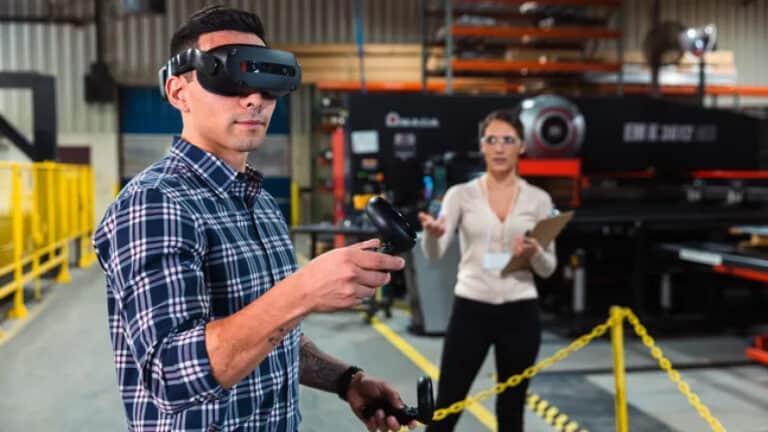The Apple Vision Pro won’t be available until next year, but is already causing major shifts among competitors. Shortly after Google stopped developing its planned VR glasses, Samsung is reviewing what specifications its own virtual reality product should offer.
Korea’s SBS Biz has seen internal communications from within Samsung showing that it is “deferring project planning for new products of existing XR devices.” Initially, the company was supposed to come out with new glasses early next year, but that now appears to have been pushed back by 1-2 quarters.
Completely new design?
It would possibly be a completely new design, as there is talk of reviewing “all internal specifications and performance, such as the design and panel of the new XR product.” According to SBS Biz sources, this decision was made to compete with the Apple Vision Pro.
Like the Meta Quest 3 and Apple Vision Pro, Samsung’s offering is said to be a pair of glasses with an internal processor. It will likely run on a Google-developed OS.
To clarify some ambiguity: XR stands for “extended reality,” which some companies use to refer to virtual or augmented reality solutions. Sometimes that means glasses that completely cut you off from the real world to see a digital 3D image, while a product like the Vision Pro mixes the real world with digital assets. Sometimes this is called “mixed reality.” In other words, there is no real standardization of these terms yet. Effectively, every product has its own interpretation.
Not the first time
Samsung, despite little success, is persevering in the VR market. It came out of the blocks early with the GearVR, a solution in partnership with Oculus (now part of Meta) meant for cell phones. However, it had little software support, featured weak performance and quickly became obsolete. A few years later, it was one of the OEM partners for the VR Windows Mixed Reality desktop platform, a similarly outdated product. Within this ecosystem, though, the Samsung HMD Odyssey was a respectable choice.
